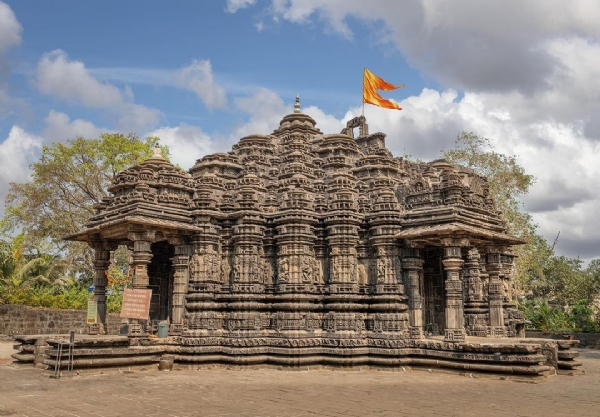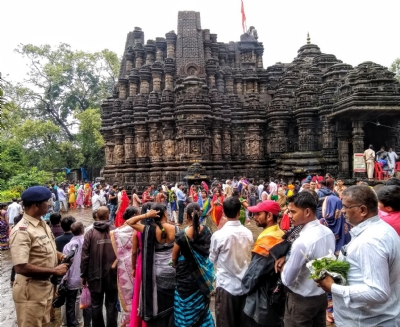Shiva temple, Ambernath: The 1000-year-old gem in Mumbai!
The Ambarnath Shiva Temple, built by the Shilahara king Chittaraja, was later renovated by his son Mumunni in year 1060 AD
Total Views |
Did you know that Ambernath hosts one of the most unique temples in all of Maharashtra, just 60 kms off downtown Mumbai? The Shiv temple in Ambernath is an ancient temple of Lord Shiva, which was constructed back in the 1060 AD. This temple is also known as Ambreshwar temple. It is one of 218 cultural heritages in the world, declared by UNESCO. Of these 218, India has 25 and Maharashtra has 4.

History | The Ambarnath Shiva Temple, built by the Shilahara king Chittaraja, was later renovated by his son Mumunni in year 1060 AD. The Shilahara kings started out as vassals of the Rashtrakutas in the Konkan region, with the Chalukya kingdom to the south. The Shiva temple at Ambernath is located just a few miles away from the ancient trade route that leads right up to the Deccan plateau.
The Shiv Temple of Ambernath is one of the oldest temple situated on the banks of Waldhuni river at Ambernath in the Thane district of Maharashtra.The local people call this temple as the Puratana Shivalaya. pic.twitter.com/xhgn44oynQ
— Maharashtra Tourism (@maha_tourism) May 17, 2021
Legend | Mythologically, it is believed that the temple had been built by Pandavas in just one night, in a huge single mass of stone during their period of exile. The temple is considered one of the oldest temples built in the mid-11th century, and is the most unique temple in the world. The Pandavas could not complete the temple, which can be seen even today in the missing roof directly above the main sanctum area / Garbha Griha of the temple. It is also said that there is a km long passageway which was used by the Pandavas to escape which is closed these days.
Architecture | The architecture of the temple has been done in the Hemadpanti style. The outer walls are carved intricately in black rock. You will find two nandis at the entrance of the temple. This is one of the unique features of the temple, as finding two nandis at the entrance in a temple is rare. You will then have to climb down 20 steps to reach the main room called as Garbha Griha; and here, you will find one shivling at the center of the room which is swayambhu or self-manifested. The temple is locally known as ‘Puratana Shivalaya'.
Also Read | Guru Ramrai Temple: the most important 17th century Gurudwara of Dehradun
The ruins of Ambershwar remain to be the shadow of its glorious past. The condition is not the best today. The future generations definitely deserve to witness the temple which represents the honoured model of history, art and culture of the past. The temple definitely deserves to be protected for the coming generations to witness.
This Shiva temple gets flooded with devotees mostly during Mahashivratri and shravani somvar. There is also a huge fair in Ambarnath on the occasion of Mahashivaratri for around 4 days. It starts two days prior to Mahashivaratri and continues for a day after Mahashivaratri. If you visit in the afternoon, make sure to have the prasad that is served in between 12 noon to 2 pm, daily.

The Ambernath temple is bhumija, and if completed, would have been close in form with the Dilwara temples of Abu, Udayeshwar of Udaipur and Gondeshwar temples of Sinnar. This is definitely an enthralling mythological temple and is so close to Mumbai, yet remains fairly undiscovered by many.
Also Read | Malinithan: A significant archaeological and historical site that consists of ruins of a Hindu temple
Restoration | The temple was also set to be restored as the state government had sanctioned Rs. 43 crores for its restoration and beautification, back in 2020. This major makeover would see the creation of several world-class facilities for devotees and tourists. The revamp would see a new amphitheatre, parking space, children’s area, a garden and bus stop. The Waldhuni river bank would also see a revamp. The temple comes under the jurisdiction of the Archaeological Survey of India (ASI).


